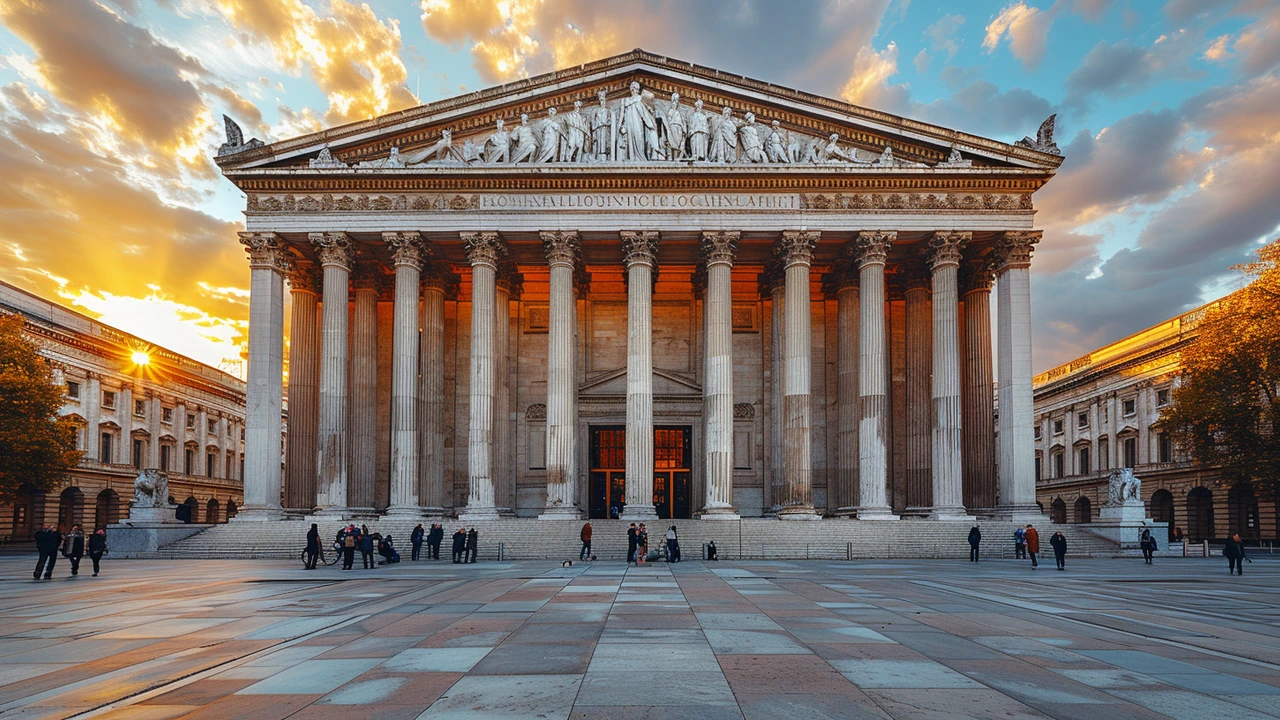The Origins and Evolution of Classicism
Classicism, at its core, represents a reverence for the values and aesthetics of the civilizations of Ancient Greece and Rome. These ancient societies set the standards for beauty, harmony, and proportion, which have influenced countless generations. The inception of classicism can be traced back to the Renaissance, a period marked by a fervent revival of interest in antiquity. Artists and architects of this era, such as Leonardo da Vinci and Michelangelo, sought inspiration from the ruins of ancient Rome and the surviving texts of philosophers and scholars. This Renaissance pursuit of classical ideals laid the groundwork for the enduring appeal of classicism.
As classicism evolved, it became synonymous with principles of order, clarity, and symmetry. These principles found expression not only in art and sculpture but also in the grandiose buildings that began to dot the landscapes of Europe. From the sprawling estates of Versailles to the United States Capitol building, classicist principles dictated the designs that came to symbolize authority, power, and enlightenment. The Age of Enlightenment further propelled classicism to the forefront of artistic movements, championing reason and intellectual exchange over the mysticism of the preceding Gothic era.
Key Characteristics of Classicist Aesthetics
Classicism is distinguished by its specific set of aesthetic guidelines, established primarily by Ancient Greek and Roman examples. These guidelines emphasize balance, proportion, and a harmonious arrangement of parts within a whole. A distinct feature of classicist architecture is the use of columns, which come in orders that include Doric, Ionic, and Corinthian—each with its own rules and decorations. In sculpture, classicism favors the depiction of the human body in its idealized form, showcasing an emphasis on anatomy and poise that reflects the admiration of the human figure.
In painting, classicism manifests through the use of perspective, a technique rediscovered during the Renaissance, creating depth and realism in art that had not been seen for centuries. The use of light and shadow, as well as the incorporation of classical themes such as mythology and history, further distinguish classicist painting. These elements combine to produce works that not only captivate the viewer but also convey moral and philosophical messages rooted in classical antiquity.
The Revival of Classical Themes in Historical Contexts
Over the centuries, classicism has experienced several revivals, each adapting the core principles of ancient art to the context of its time. The most notable of these revivals occurred during the Neoclassical period in the 18th and 19th centuries, prompted by archaeological discoveries like the ruins of Pompeii. These discoveries reignited an enthusiasm for classical art and architecture, leading to a widespread adoption of classicist styles in Europe and America.
Whether in the form of public buildings, monuments, or even domestic architecture, neoclassicism sought to embody civic virtues and a sense of historical continuity with the ancient world. This period also saw the emergence of movements like the Grand Tour, where young aristocrats traveled across Europe, immersing themselves in classical art and culture as a form of education. The influence of these experiences further entrenched classicism in the arts and society, ensuring its relevance for future generations.
Appreciating Classicism in the Modern World
Today, classicism continues to resonate, its principles evident in various aspects of modern design and architecture. Recognizing classicist elements can enrich one's appreciation of the built environment, offering insights into the enduring nature of classical ideals. When observing a building, look for symmetrical layouts, the use of columns, and references to classical motifs. In art, the presence of ancient themes, an emphasis on harmony, and the portrayal of the human body in idealized forms signal a classicist influence.
But beyond mere aesthetics, classicism embodies a philosophical stance that values balance, rationality, and a connection to history. Engaging with classicism, whether through direct study or simply by appreciating its manifestations in the world around us, offers a deeper understanding of the human experience, bridging past and present. As we continue to navigate the complexities of the modern age, the timeless principles of classicism remind us of the value of looking to the past to inform our future.



